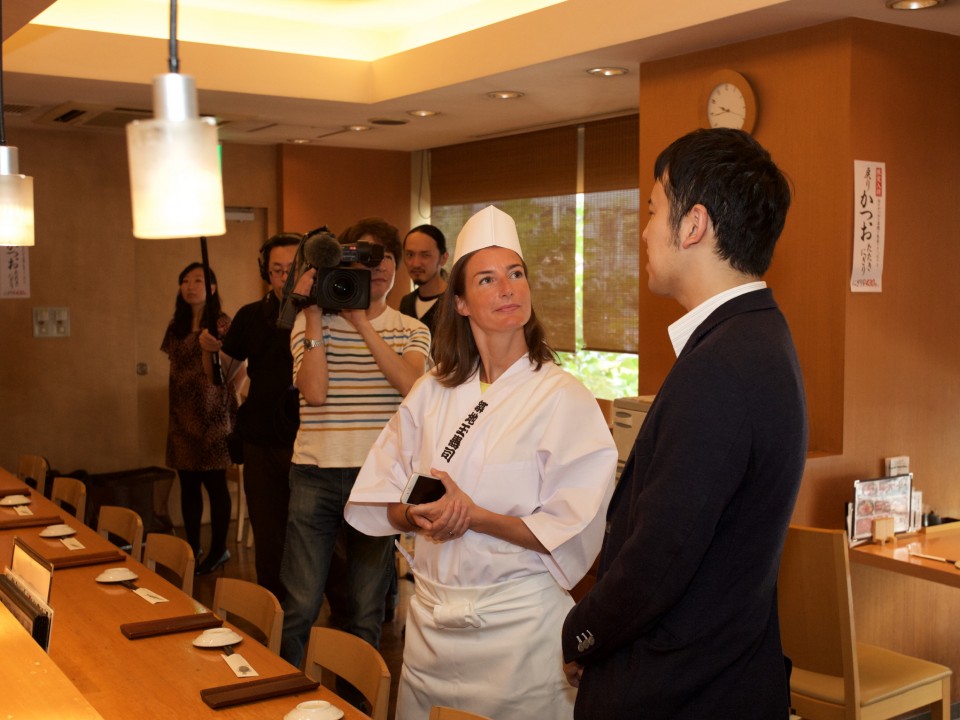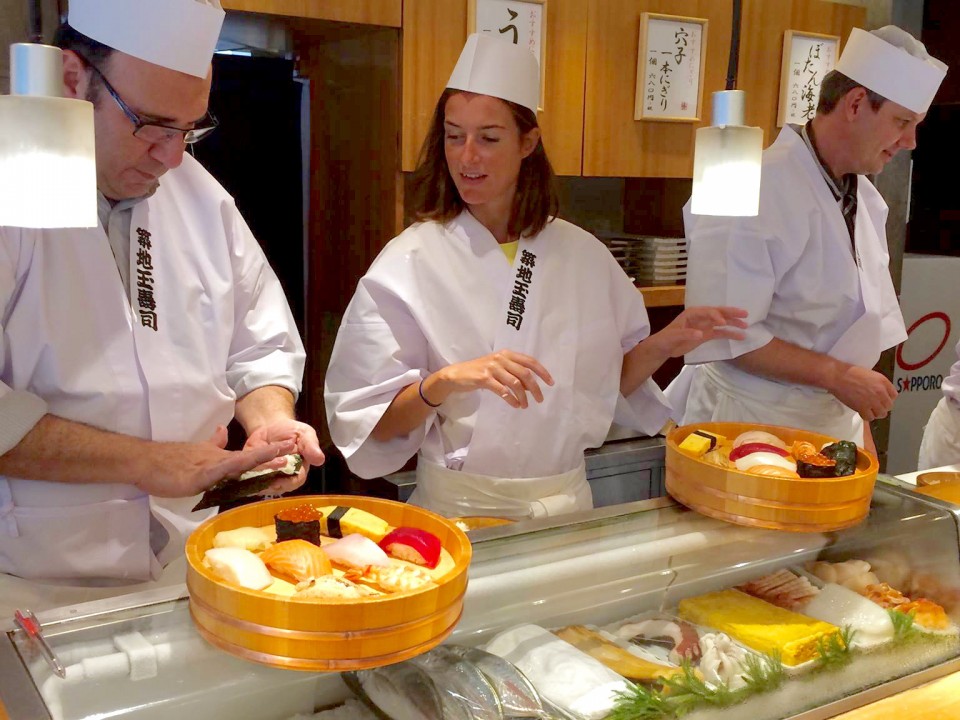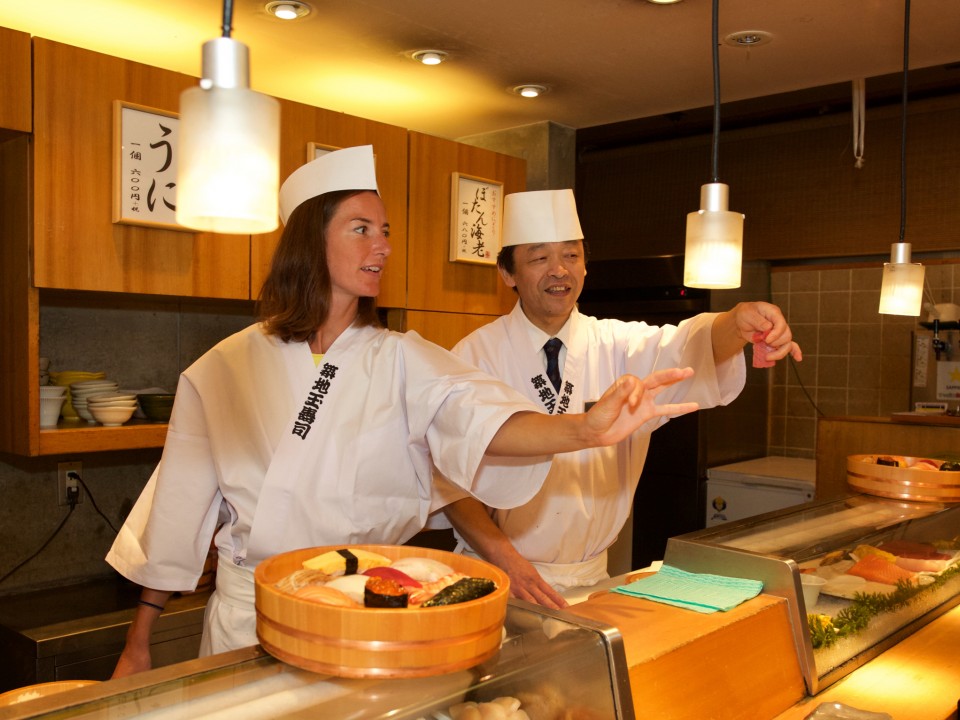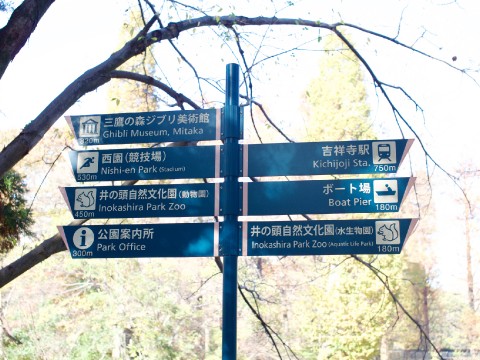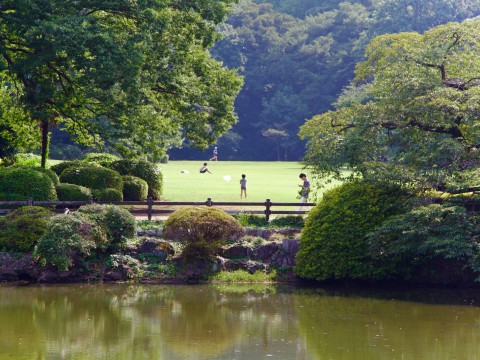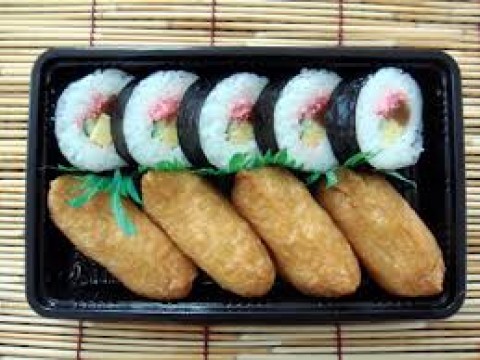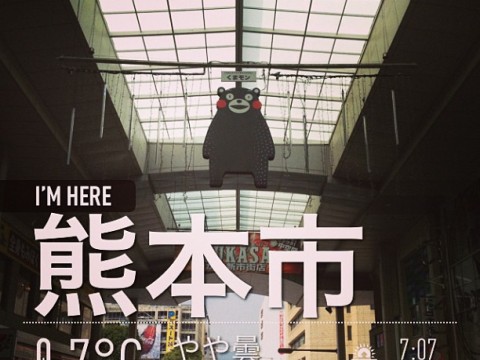The Tama Sushi Experience: Learning how to make sushi the right way!
Making sushi is both challenging and fun
Deep Japan Senpai Jason, Katharina and myself were invited by Tama Sushi to receive the Tama Sushi Experience, so we could give them our opinions and convey our experiences to you via Deep Japan. Lucky us -- not only did we have a great time, we learned a lot and enjoyed a sushi lunch too!
The location of our lesson and Tama Sushi's headquarters is Tsukiji, close by the famous Tsukiji fish market. It also happens to be close to Ginza, so it's rather convenient. Tama Sushi opened in 1924 and is very respected in the sushi world. They believe in creating sushi the traditional way with love and attention to detail.
After getting outfitted and throughly washing our hands we were taken behind the sushi counter and received a fascinating briefing from the Sushi Chef on the history of sushi and other sushi related facts. We learned, for example, the early sushi was not raw fish on vinegar infused rice with a hint of wasabi like today's "nigiri sushi," rather the fish was put on or in fermented rice and left to ferment. That style of sushi, called nare sushi, actually came to Japan from SE Asia and was a well known method to preserve the fish. It was also a rather tedious and time consuming process. The modern style of sushi was developed during the Edo period (1799 - 1858) and made sushi faster to prepare and more accessible.
The Chef's briefing is in Japanese, so if you not a Japanese speaker you should go with a bilingual friend. On the other hand, if you are bilingual and have guests coming to town, you can really give them something special by doing the Tama Sushi Experience with them or interpreting for them. Moreover, the actual sushi making lesson can be done by closely copying the demonstration given by the Chef, so language is not a barrier for that part.
Sharing and Learning
While it takes years of study and practice to become a sushi master you will learn enough to vastly improve your ability to make home sushi and better appreciate quality sushi when you go out for it. In later Deep Japan instalments my colleagues and I will dive a bit deeper in to the specifics of our experience.
The course is 1.5 hours long and includes making 8 nigiri sushi, 1 temaki sushi and costs 8,000 yen. It's guaranteed to leave you with positive lasting memories.
Quality and presentation
Sign up through GURUNAVI at http://r.gnavi.co.jp/jge/en/entry/post-000814.html
And check out Tama Sushi's webpage as well at http://www.tamasushi.co.jp/english/
(Sponsored Content)

Aron
United States



